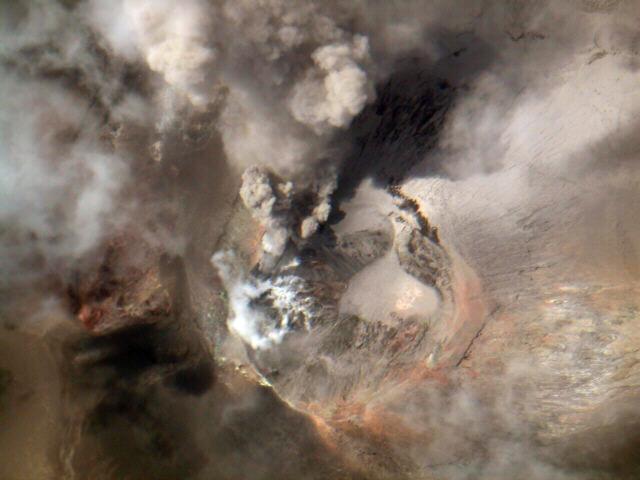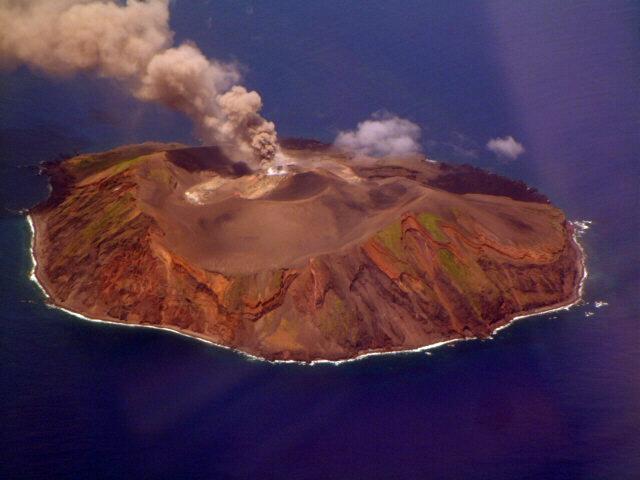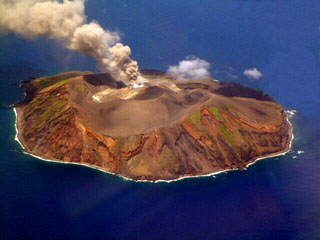Report on Izu-Torishima (Japan) — July 2002
Bulletin of the Global Volcanism Network, vol. 27, no. 7 (July 2002)
Managing Editor: Richard Wunderman.
Izu-Torishima (Japan) Ash plumes during August 2002 indicate first activity since 1975
Please cite this report as:
Global Volcanism Program, 2002. Report on Izu-Torishima (Japan) (Wunderman, R., ed.). Bulletin of the Global Volcanism Network, 27:7. Smithsonian Institution. https://doi.org/10.5479/si.GVP.BGVN200207-284090
Izu-Torishima
Japan
30.484°N, 140.303°E; summit elev. 394 m
All times are local (unless otherwise noted)
Around 1530 on 11 August 2002, a ship sailing near Tori-shima reported white smoke rising from the summit of the island. The Japanese Coast Guard inspected the island from the air during 1738-1818 and confirmed that the plume was rising 200-300 m from near the summit crater (Iwo-yama).
During an overflight on 12 August from 1145 to 1245 by the Japanese Meteorological Agency (JMA), an ash-laden plume was rising from the SW wall of the Iwo-yama summit crater. White plumes were also observed rising from the S to SE crater wall (figures 1 and 2). A vigorous ash plume rose 200-300 m above the crater every few minutes and drifted W to ~1 km above sea level. The summit area and the middle slope NNW of the summit were covered with ashfall deposits. The sea surface was discolored in an area up to 20 km W of the island. Izu-Tori-shima island is currently uninhabited.
 |
Figure 1. Photo showing the Iwo-yama crater of Tori-shima volcano, taken around 1200 on 12 August 2002. Courtesy JMA. |
 |
Figure 2. Southern view of Tori-shima volcano showing ash plume from the summit crater, taken around 1200 on 12 August 2002. Courtesy JMA. |
Geological Summary. The circular, 2.7-km-wide island of Izu-Torishima in the southern Izu Islands is capped by an unvegetated summit cone formed during an eruption in 1939. Fresh lava flows from this eruption form part of the northern coastline of the basaltic-to-dacitic edifice. The volcano is referred to as Izu-Torishima to distinguish it from the several other Japanese island volcanoes called Torishima ("Bird Island"). The main cone is truncated by a 1.5-km-wide caldera that contains two central cones, of which Ioyama is the highest. Historical eruptions have also occurred from flank vents near the north coast and offshore submarine vents. A submarine caldera 6-8 km wide lies immediately to the north.
Information Contacts: Tomonori Kannno and Hitoshi Yamasato, Japanese Meteorological Agency (JMA), Volcanological Division, 1-3-4 Ote-machi, Chiyoda-ku, Tokyo 100, Japan (URL: http://www.jma.go.jp/).

